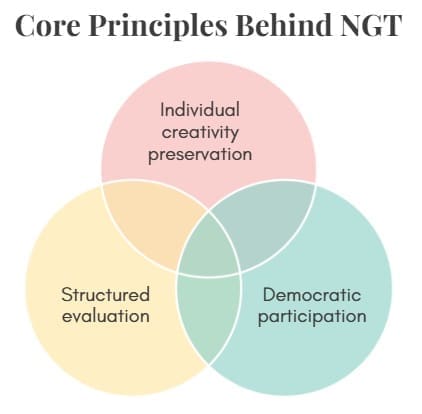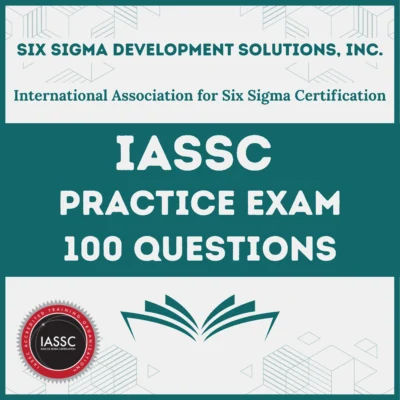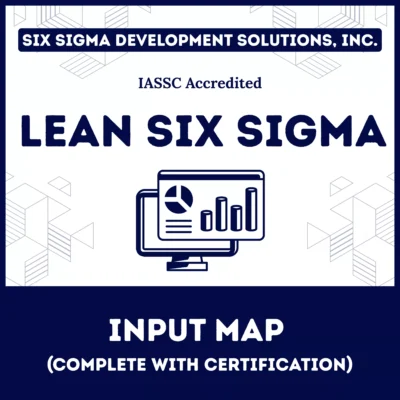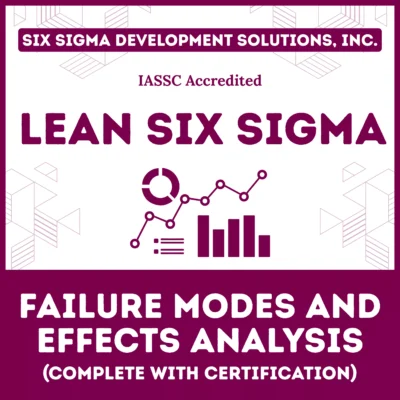Group decision-making often becomes chaotic, dominated by vocal participants while quieter voices remain unheard. However, the nominal group technique offers a structured solution that revolutionizes how teams approach problem-solving and generate creative solutions.
This powerful methodology transforms traditional brainstorming sessions into organized, productive meetings where every participant contributes equally. Furthermore, organizations worldwide have discovered that implementing NGT leads to more innovative solutions and higher participant satisfaction.
Whether you’re a project manager preparing for PMP certification, a team leader seeking better outcomes, or someone curious about effective group processes, mastering this technique will significantly enhance your collaborative effectiveness.
Table of contents
- What is the Nominal Group Technique?
- How Does the Nominal Group Technique Work?
- Complete Nominal Group Technique Process
- Nominal Group Technique vs. Other Methods
- Real-World Applications of the Nominal Group Technique
- Example
- Tips for Facilitating a Successful NGT Session
- Common Pitfalls and How to Avoid Them
- Nominal Group Technique in the PMP Exam
- FAQs About the Nominal Group Technique
- Final Words
- Related Articles
What is the Nominal Group Technique?
The Nominal Group Technique, often abbreviated as NGT, is a structured group discussion method designed to generate ideas, prioritize solutions, and make decisions collaboratively. Unlike traditional brainstorming, which can be chaotic or dominated by vocal individuals, NGT ensures every participant contributes equally in a controlled yet creative environment.
Developed by Andre Delbecq and Andrew Van de Ven in the 1970s, NGT combines individual idea generation with group discussion to produce high-quality outcomes.
Public, Onsite, Virtual, and Online Six Sigma Certification Training!
- We are accredited by the IASSC.
- Live Public Training at 52 Sites.
- Live Virtual Training.
- Onsite Training (at your organization).
- Interactive Online (self-paced) training,
Key Characteristics of NGT
- Structured Process: NGT follows a clear, step-by-step approach to keep discussions focused and productive.
- Equal Participation: Every participant has an equal opportunity to share ideas, reducing the influence of dominant personalities.
- Prioritization: Ideas are ranked or voted on to identify the most promising solutions.
- Versatility: NGT is used in project management, problem-solving, strategic planning, and more.
By blending individual creativity with collective evaluation, NGT strikes a balance between innovation and consensus, making it ideal for teams seeking actionable results.
Core Principles Behind NGT

The nominal group process operates on several fundamental principles that distinguish it from traditional brainstorming:
Individual creativity preservation: By starting with silent idea generation, NGT prevents early ideas from influencing others’ thinking patterns.
Democratic participation: Every member receives equal opportunity to contribute, regardless of personality type or organizational hierarchy.
Structured evaluation: The systematic ranking process ensures objective decision-making based on merit rather than persuasive presentation.
Also Read: Problem-Solving Tools
Why Use the Nominal Group Technique?
The Nominal Group Technique shines in scenarios where diverse perspectives need to converge on a single solution. Here’s why it’s a go-to method for problem-solving and decision-making:
Benefits of Using NGT
- Encourages Equal Participation: NGT ensures quieter team members have a voice, fostering inclusivity.
- Reduces Groupthink: By allowing independent idea generation, NGT minimizes the risk of conforming to dominant opinions.
- Boosts Creativity: The structured format encourages participants to think freely without immediate criticism.
- Prioritizes Ideas Efficiently: NGT’s ranking system helps teams focus on the most viable solutions.
- Time-Efficient: Unlike open-ended brainstorming, NGT delivers results within a set timeframe.
For project managers studying for the PMP exam, understanding NGT is crucial, as it’s a recognized tool in the PMBOK Guide for facilitating group decision-making.
How Does the Nominal Group Technique Work?

The Nominal Group Technique follows a structured process that maximizes creativity and consensus. Here’s a step-by-step breakdown:
Step 1: Define the Problem or Question
The facilitator clearly states the problem or question to be addressed. For example, “What are the best strategies to improve customer satisfaction?” A well-defined question sets the stage for focused idea generation.
Step 2: Silent Idea Generation
Each participant silently writes down their ideas or solutions. This individual brainstorming phase ensures everyone contributes without influence from others, fostering originality.
Step 3: Round-Robin Sharing
Participants take turns sharing one idea at a time, which the facilitator records on a whiteboard or flipchart. This continues until all ideas are listed, creating a master list without discussion or debate.
Step 4: Group Discussion and Clarification
The group discusses the ideas to clarify meanings, combine similar suggestions, or eliminate duplicates. This phase encourages collaboration while maintaining a respectful tone.
Step 5: Voting and Prioritization
Participants rank the ideas (e.g., by assigning points or selecting top choices). The facilitator tallies the votes to identify the highest-priority solutions.
Step 6: Final Decision
Based on the voting results, the group agrees on the top solutions or develops an action plan. This step ensures the process leads to actionable outcomes.
Also Read: Variable Data
Complete Nominal Group Technique Process

Phase 1: Silent Idea Generation
The nominal group technique begins with participants working individually to generate ideas. During this phase, team members write down their thoughts without discussion or interaction.
Duration: Typically 10-15 minutes Focus: Maximum idea generation without evaluation Rule: No verbal communication allowed
This silent period allows introverted participants to contribute fully while preventing dominant personalities from steering the conversation prematurely.
Phase 2: Idea Sharing and Recording
Following the silent generation phase, participants share their ideas systematically. The facilitator records each suggestion on a visible medium, such as a whiteboard or flip chart.
Process flow:
- Round-robin sharing (one idea per person per round)
- No discussion or evaluation during sharing
- Continue until all ideas are presented
- Duplicate ideas are noted but not eliminated
Consequently, this phase creates a comprehensive master list that represents the collective thinking of the entire group.
Phase 3: Idea Clarification and Discussion
Once all ideas appear on the master list, the group engages in structured discussion. Participants can ask questions for clarification, but they cannot criticize or evaluate ideas during this phase.
Discussion guidelines:
- Focus on understanding, not judging
- Ask clarifying questions only
- Avoid combining similar ideas prematurely
- Ensure every idea receives adequate explanation
This phase ensures all participants understand each proposed solution before moving to evaluation.
Phase 4: Voting and Ranking
The final phase involves systematic evaluation and ranking of generated ideas. Participants vote privately, typically using a numerical ranking system.
Common voting methods:
- Nominal ranking: Order ideas from most to least preferred
- Weighted scoring: Assign points based on predetermined criteria
- Multiple voting: Select top choices through dot voting
- Paired comparison: Compare ideas against each other systematically
Subsequently, the facilitator tallies votes and presents results to the group for final discussion and decision-making.
Nominal Group Technique vs. Other Methods
How does NGT compare to other group decision-making methods like brainstorming or the Delphi Technique?
NGT vs. Brainstorming
While both methods aim to generate ideas, NGT is more structured. Traditional brainstorming encourages spontaneous idea-sharing, which can favor outspoken individuals and lead to groupthink. In contrast, NGT’s silent generation and round-robin sharing ensure equal participation and reduce bias.
NGT vs. Delphi Technique
The Delphi Technique involves multiple rounds of anonymous feedback from experts, often conducted remotely, to reach a consensus. While effective for forecasting or complex problems, it’s time-consuming and less interactive. NGT, on the other hand, is ideal for in-person or virtual meetings where quick, collaborative decisions are needed.
Real-World Applications of the Nominal Group Technique
The Nominal Group Technique is versatile, with applications across industries and scenarios. Here are some examples:
Project Management
In PMP contexts, NGT is used to prioritize project risks, select vendors, or define project scope. For instance, a project team might use NGT to brainstorm cost-saving measures, ensuring all stakeholders contribute ideas.
Healthcare
Hospitals use NGT to develop patient care protocols or improve operational efficiency. A team of nurses and doctors might use NGT to identify strategies for reducing patient wait times.
Education
Educators apply NGT to design curricula or address classroom challenges. For example, a faculty meeting might use NGT to brainstorm ways to enhance student engagement.
Business Strategy
Companies use NGT for strategic planning, such as identifying new product features or marketing strategies. A marketing team might use NGT to prioritize campaign ideas based on customer feedback.
Example
Suppose a company wants to improve employee retention. The facilitator poses the question: “What initiatives can improve employee satisfaction?” Team members silently list ideas like flexible work hours, professional development programs, and wellness benefits. During round-robin sharing, these ideas are recorded, discussed, and ranked. The group agrees to prioritize flexible work hours and training programs, creating an action plan to implement them.
Tips for Facilitating a Successful NGT Session
To maximize the effectiveness of the Nominal Group Technique, consider these best practices:
- Choose a Skilled Facilitator: A neutral facilitator keeps the process on track and ensures inclusivity.
- Set Clear Ground Rules: Emphasize no criticism during idea generation to foster a safe environment.
- Use Visual Aids: Whiteboards or digital tools like Miro enhance clarity during idea sharing and discussion.
- Keep Groups Manageable: Aim for 5-10 participants to balance diversity and efficiency.
- Timebox Each Step: Allocate specific times for each phase to maintain momentum.
Common Pitfalls and How to Avoid Them
While NGT is powerful, it’s not foolproof. Here are common challenges and solutions:
Pitfall 1: Vague Problem Definition
A poorly defined question can lead to irrelevant ideas. Solution: Craft a specific, actionable question before starting.
Pitfall 2: Dominant Participants
Strong personalities can overshadow quieter members. Solution: Enforce the silent generation and round-robin phases strictly.
Pitfall 3: Rushed Voting
Hurried prioritization can skew results. Solution: Allow sufficient time for discussion and voting to ensure thoughtful rankings.
Nominal Group Technique in the PMP Exam
For those pursuing the PMP certification, NGT is a key tool in the PMBOK Guide’s “Collect Requirements” and “‘Group Decision-Making Techniques” processes. Questions about NGT may appear in the exam, such as:
- What is a benefit of using the Nominal Group Technique for problem-solving?
Answer: It ensures equal participation and reduces groupthink by structuring idea generation and prioritization. - Which of the following correctly describes the Nominal Group Technique?
Answer: A group discussion method where individuals generate ideas silently, share them in a round-robin format, and prioritize them through voting.
Mastering NGT can give you an edge in both the exam and real-world project management.
FAQs About the Nominal Group Technique
What is the Nominal Group Technique?
The Nominal Group Technique (NGT) is a structured method for group brainstorming and decision-making, where participants generate ideas individually, share them in a round-robin format, discuss, and prioritize solutions through voting.
How does NGT differ from brainstorming?
Unlike traditional brainstorming, NGT uses a structured process with silent idea generation and equal participation, reducing groupthink and ensuring all voices are heard.
When should I use the Nominal Group Technique?
Use NGT for problem-solving, prioritizing ideas, or making decisions in group settings, such as project planning, strategic meetings, or team workshops.
What is a benefit of using the Nominal Group Technique for problem-solving?
NGT promotes inclusivity, reduces bias, and efficiently prioritizes ideas, leading to high-quality, consensus-driven solutions.
How does NGT compare to the Delphi Technique?
NGT is faster and more interactive, ideal for in-person or virtual meetings, while the Delphi Technique is slower, anonymous, and suited for expert consensus over multiple rounds.
Final Words
The Nominal Group Technique is more than a brainstorming tool—it’s a catalyst for collaboration, creativity, and consensus. By giving every participant a voice and structuring the decision-making process, NGT transforms group discussions into productive, inclusive, and results-driven sessions.



















